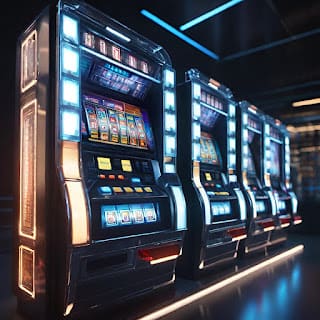Slot games have enchanted players for decades with their intoxicating combination of lights, sounds, and, for some lucky players, life-changing jackpots. But how do they do it? According to Sergio Zammit from Techopedia, slots are the most popular casino game category and feature an incredible variety of themes, mechanics, and bonus features. But how are all of these different games created? Let’s explore how slot games are designed and built and how they keep us enthralled, spin after spin.
Conceptualizing the Experience
Developing a slot game begins with brainstorming to decide a theme for the game. To choose the right idea, understanding player preferences is critical. Developers conduct and analyze market research to identify aesthetics and trends that resonate with audiences. Whatever is decided, whether it’s the dazzling gems of a “Starburst” adventure or a thrilling quest through ancient Egypt, the chosen concept lays the groundwork and sets the tone.
The Art of Immersion: Sound, Sight, and Sensory Storytelling
Next, just like a miniature movie production, artists, animators, and musicians collaborate to bring the game’s concept to life. Take, for example, a game like “Gonzo’s Quest,” every detail, from the cascading jewels to the sweeping orchestral soundtrack, is painstakingly designed to transport you to a lost Inca city. Displays of dazzling sights and spellbinding soundtracks are crafted to ensure players feel triumphant in victory, suspenseful during play, and motivated to keep spinning time after time. This intricate dance of artistry and psychology elevates slot games from simple games of chance to engaging experiences.
Mathematics, Mechanics, and Technomancy
While artists, animators, and musicians create the immersion, mathematicians weave their magic. Using probability models and algorithms, developers predetermine how the game pays out, with the “Return to Player” (RTP) rate ensuring fairness by dictating how much of your wager returns you over time. Designers also consider “volatility,” the risk factor of the game. High volatility means bigger but less frequent wins, ideal for adrenalin junkies. Conversely, low-volatility games offer smaller but regular payouts, ideal for casual players. Adjusting volatility allows developers to tailor their game to any player.
Once this mathematical foundation is laid, programmers build the core engine that governs everything else, from the satisfying spin animations to the heart-pounding bonus features. Most importantly, they integrate Random Number Generators (RNG) to ensure fair play, guaranteeing random outcomes every spin. A surprising amount of thought and planning goes into the unseen technomancy that makes slot games tick.
The Finishing Touches: Testing and Refinement
After game mechanics are locked in, rigorous testing begins, combining technical checks with player insights. First, quality assurance teams hunt down and squash bugs, ensuring the game runs flawlessly. Next, player testing in focus groups provides crucial feedback on the game directly from its target audience. This helps developers fine-tune the gameplay and guarantee an engaging and rewarding final product.
The Finished Product
Polished and primed, the game is finally ready for release. Marketing teams can now release advertising campaigns and promotional material, while technicians integrate the masterpiece to function in online, offline, and crypto casino platforms. It’s a long journey from the first concept to the finished product, and the process of slot game design is a fascinating marriage of art, mathematics, psychology, and science. So next time you hit the jackpot, remember the tireless efforts of the developers whose hard work captivates players like us, spin after spin.

